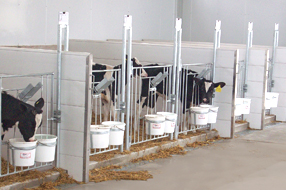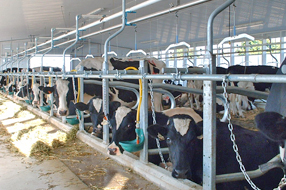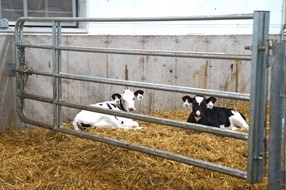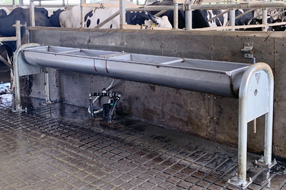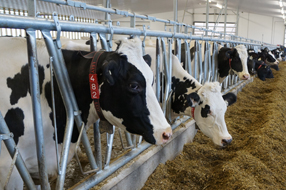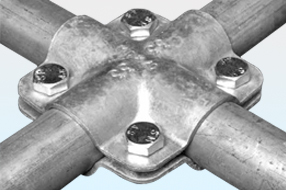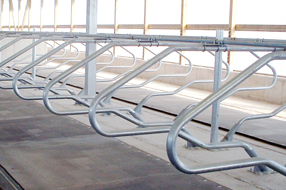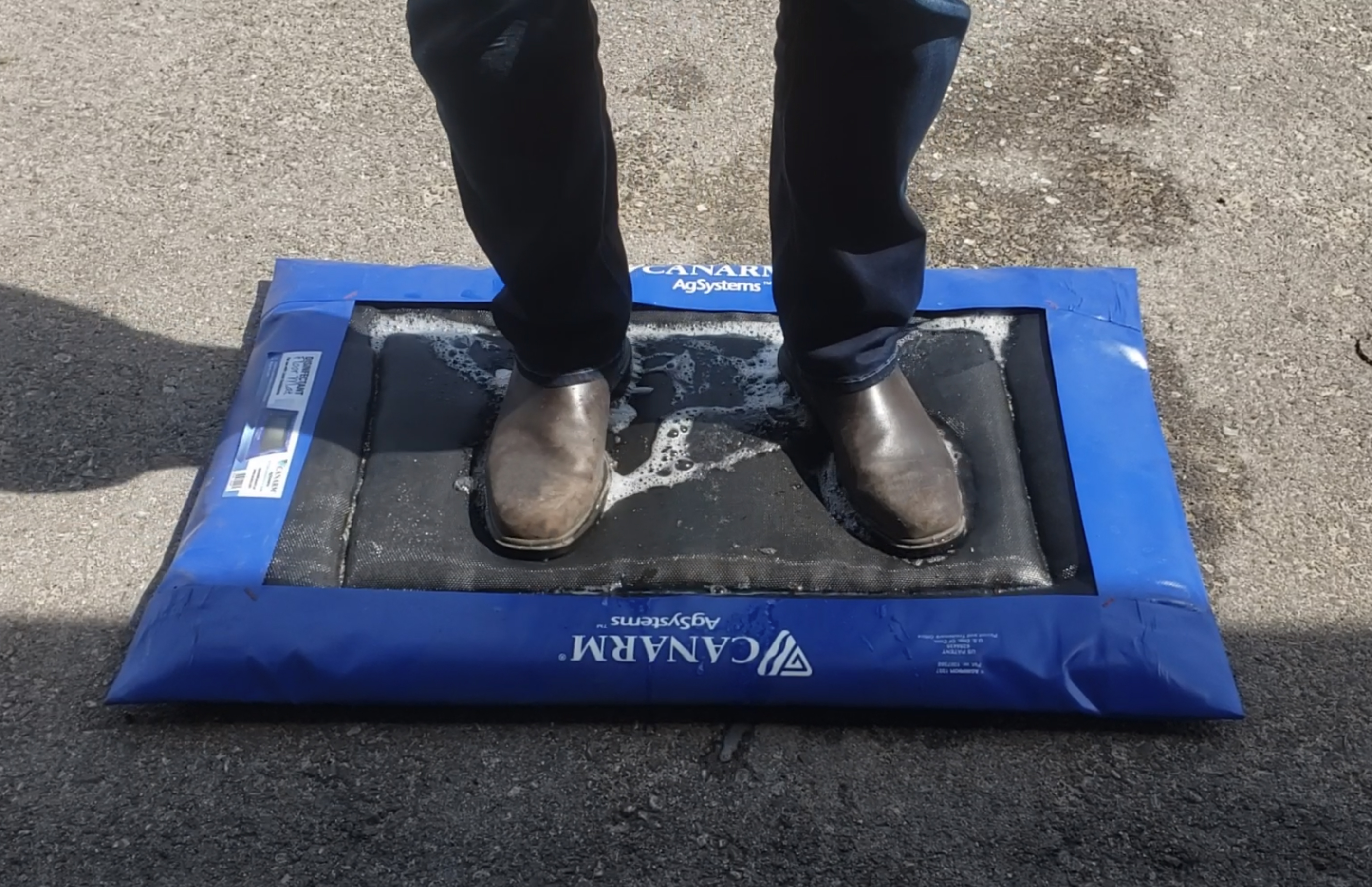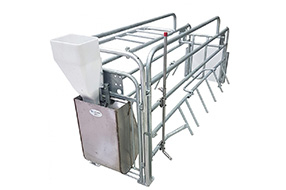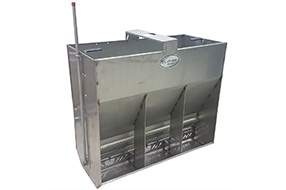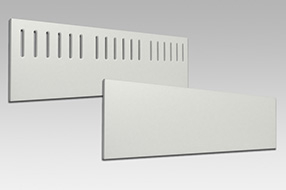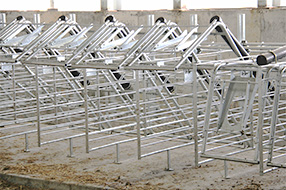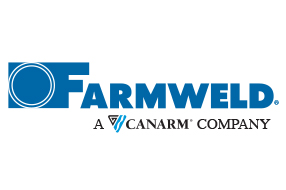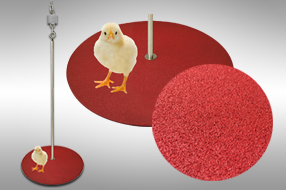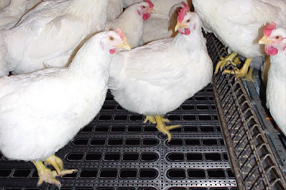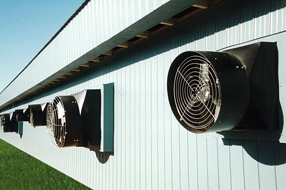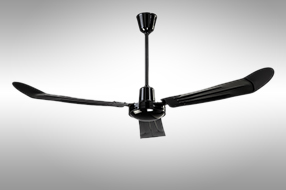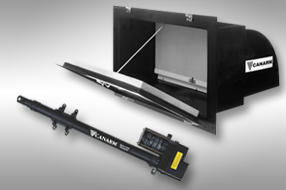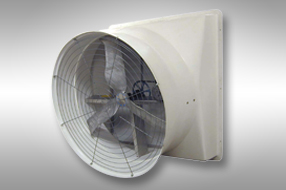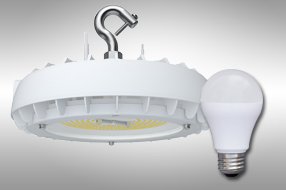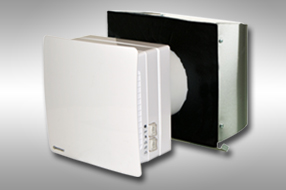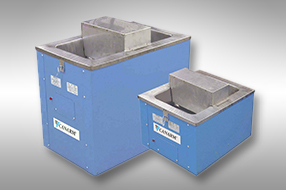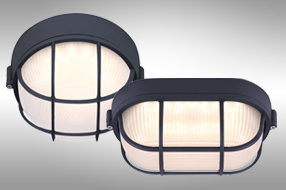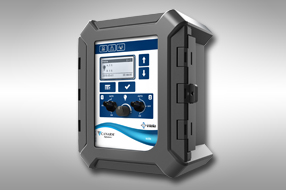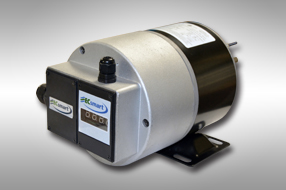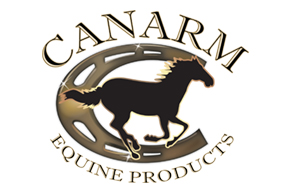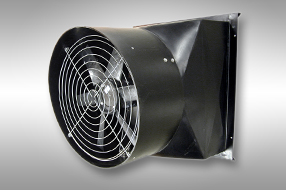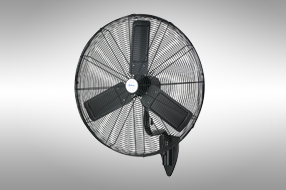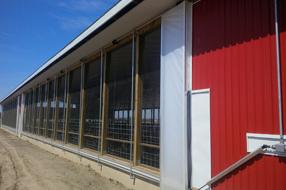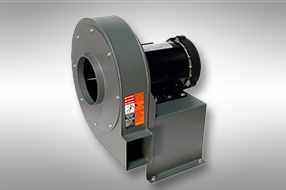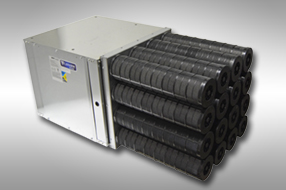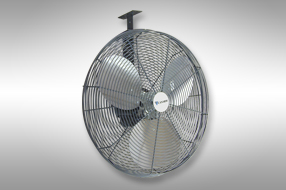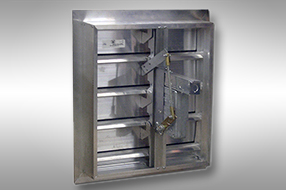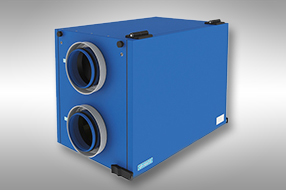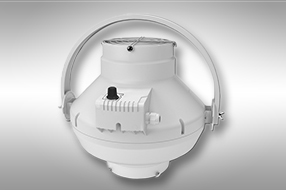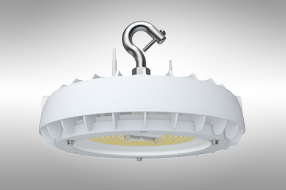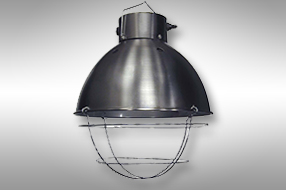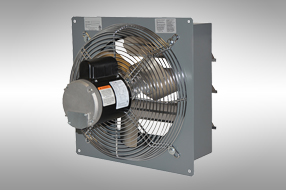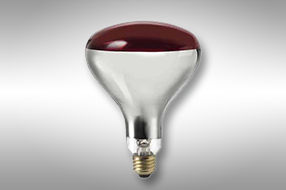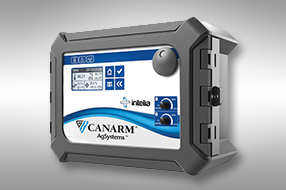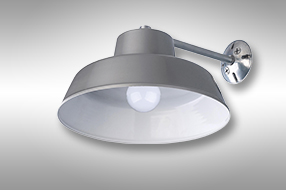Ventilation Design for your Sow Barn

You have many factors to consider when designing a ventilation system for your dry sow or breeding facility to ensure your barn will provide an optimal environment for your pigs. The three basic options are natural, dual or power ventilation.
You must first consider housing type when deciding which type of system to use. Do you plan to use gestation stalls or group penning?
The group pen layout tends to favour natural or dual ventilation since this layout allows sows to move about freely to find comfort zones with no drafts. A straw-bedding design provides animals with the additional advantage of nesting in the straw if they feel cold. In natural ventilation designs, you can add a small volume power system to operate in the cold weather to compensate for this potential issue.
The tighter temperature control provided by power ventilation may ensure more comfort for animals with restricted movement in a stall design. Power ventilation systems usually have most, if not all, the intake air entering the livestock zone from the attic space. This design allows the warmth of the attic, which is created by sunlight warming the steel roof, to warm the air before it reaches the animals. The use of properly designed and laid out fresh air ceiling inlets creates an air pattern that allows for proper air exchange without creating drafts.

Another factor when selecting your ventilation system would be how much natural light you need. If this consideration is important to you, then natural or dual ventilation systems that use translucent or clear panels are your best choice. These systems still allow light in when the panels are closed in cold temperatures. Of course, Mother Nature takes care of providing light in warmer weather when the panels are open.
As always, economics play a part in all these decisions. The initial costs of the equipment in a natural or dual system versus a power system will be very close, experience shows.
The difference becomes apparent in the ongoing operating expenses, as power ventilation systems have much higher costs to run. You may want to consider a standby power source to keep your powered ventilation system running in case of a hydro outage.
You should also consider post-sales support and service when making your decision. Given the advanced control systems in modern ventilation systems, it is important to work with people who can provide you with the proper setup and programming of your system.
As no two systems are the same, these individuals must be available to adjust and fine-tune your system over time. With the advent of online connections for many of today’s computer control systems, specialists can often safely troubleshoot off-site. This arrangement helps eliminate biosecurity risks, which is a huge benefit given the current environment in the hog industry.

In summary, as you work through the design of your new building, review the types of ventilation systems available to find the one that meets your needs and priorities.
In the process, be sure to talk with one of the industry’s experienced ventilation specialists. While you can provide input on your specialty and animal husbandry, the ventilation expert can present all possible options that could meet your operational and budgetary needs and design requirements. The selection of a system isn’t a clearcut decision, as one type of system is not simply better than the others. A knowledgeable professional can help you make the right choice.
After all, you and your pigs will depend on this investment for years to come.

As seen in Oct 2020 edition of Better Pork.


